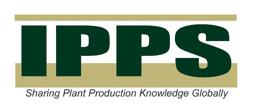|
Vol. 52
Title:
Konjac: Production in Japan and Potential for New Zealand
Authors:
J.M. Follett, J.A. Douglas and P. Cave
pp: 186-190
Abstract:
INTRODUCTION
Konjac (Amorphophallus konjac syn. A. rivieri), devil’s tongue, snake palm, umbrella
arum, or konnyaku, as it is known in Japan, is a member of the Araceae (aroid)
family which contains ninety or so species of cormous perennial, deciduous herbs.
Konjac is a native of Asia from Indonesia to Japan. In Japan it is grown for its large
edible corms which are traditionally made into noodles. Now almost the entire crop
grown in Japan is processed to extract gluco mannan, a carbohydrate which is used
as a thickening and gelling agent, and as a fat replacement in a wide range of food
preparations in the fast food industry. In Japan konjac is regarded as a health food
because it is high in dietary fibre and can be used in food preparations suitable for
diabetics. It is also often incorporated into slimming preparations because it is low
in calories. Eleven to twelve thousand tonnes of konjac are produced annually in
Japan with 80% produced in Gumma Prefecture, north west of Tokyo.
Full text:
IPPS members
ISHS members & pay-per-view
(PDF 193195 bytes)
Translate:
   IPPS membership administration
ISHS membership administration
|



